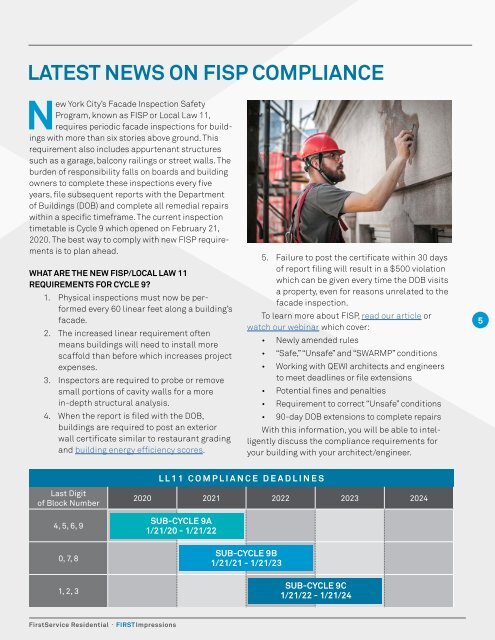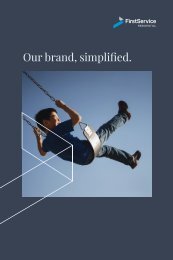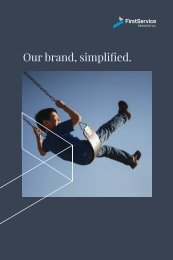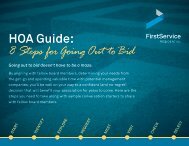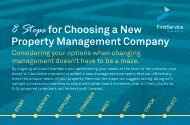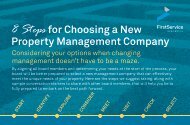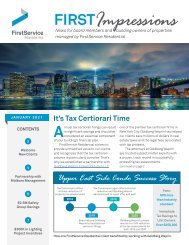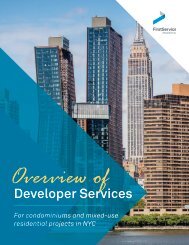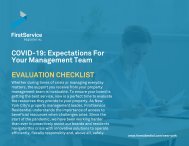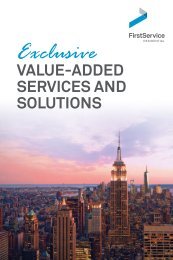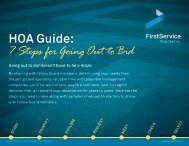FSR First Impressions Dec20 Final Email
Create successful ePaper yourself
Turn your PDF publications into a flip-book with our unique Google optimized e-Paper software.
LATEST NEWS ON FISP COMPLIANCE<br />
New York City’s Facade Inspection Safety<br />
Program, known as FISP or Local Law 11,<br />
requires periodic facade inspections for buildings<br />
with more than six stories above ground. This<br />
requirement also includes appurtenant structures<br />
such as a garage, balcony railings or street walls. The<br />
burden of responsibility falls on boards and building<br />
owners to complete these inspections every five<br />
years, file subsequent reports with the Department<br />
of Buildings (DOB) and complete all remedial repairs<br />
within a specific timeframe. The current inspection<br />
timetable is Cycle 9 which opened on February 21,<br />
2020. The best way to comply with new FISP requirements<br />
is to plan ahead.<br />
WHAT ARE THE NEW FISP/LOCAL LAW 11<br />
REQUIREMENTS FOR CYCLE 9?<br />
1. Physical inspections must now be performed<br />
every 60 linear feet along a building’s<br />
facade.<br />
2. The increased linear requirement often<br />
means buildings will need to install more<br />
scaffold than before which increases project<br />
expenses.<br />
3. Inspectors are required to probe or remove<br />
small portions of cavity walls for a more<br />
in-depth structural analysis.<br />
4. When the report is filed with the DOB,<br />
buildings are required to post an exterior<br />
wall certificate similar to restaurant grading<br />
and building energy efficiency scores.<br />
5. Failure to post the certificate within 30 days<br />
of report filing will result in a $500 violation<br />
which can be given every time the DOB visits<br />
a property, even for reasons unrelated to the<br />
facade inspection.<br />
To learn more about FISP, read our article or<br />
watch our webinar which cover:<br />
• Newly amended rules<br />
• “Safe,” “Unsafe” and “SWARMP” conditions<br />
• Working with QEWI architects and engineers<br />
to meet deadlines or file extensions<br />
• Potential fines and penalties<br />
• Requirement to correct “Unsafe” conditions<br />
• 90-day DOB extensions to complete repairs<br />
With this information, you will be able to intelligently<br />
discuss the compliance requirements for<br />
your building with your architect/engineer.<br />
5<br />
LL11 COMPLIANCE DEADLINES<br />
Last Digit<br />
of Block Number<br />
4, 5, 6, 9<br />
0, 7, 8<br />
1, 2, 3<br />
2020 2021 2022 2023 2024<br />
SUB-CYCLE 9A<br />
1/21/20 - 1/21/22<br />
SUB-CYCLE 9B<br />
1/21/21 - 1/21/23<br />
SUB-CYCLE 9C<br />
1/21/22 - 1/21/24<br />
<strong>First</strong>Service Residential · FIRST<strong>Impressions</strong>


